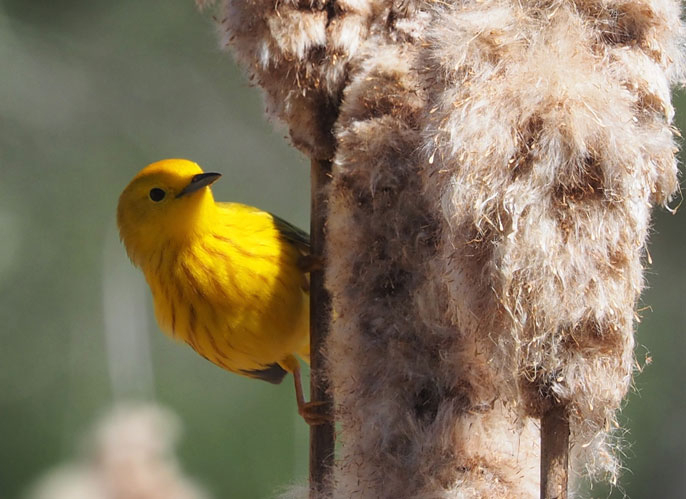
Bird species can face severe declination or extinction due to their inability to adapt to climatic and environmental changes. Researchers at University of California (UCLA) state that this can be due to difficulties in genetic adaptations. Using genetics, the team is trying to find the potential for adaptation that can protect the population of birds that are vulnerable.
According to a research published in the journal Science, the UCLA scientists have been studying yellow warbler, a migratory bird found commonly in North America. The bird usually travels to Central and South America during winters and are found in regions like Alaska and Arctic Circle during summers.
Using blood, tissue and feather samples collected from yellow warblers from across its dwelling regions, the team has found genes that are responding to the climate change and also found that those bird populations in need of adapting to climate changes are facing decline.
Kristen Ruegg, an evolutionary biologist at UCLA said, "With this research, we can say, 'based on these gene-environment correlations, here's how populations will have to adapt to future climate change. And here are the populations that have to adapt most."
Previous studies have found that long-term changes in temperature and precipitation cause bird species to migrate to other geographical locations. Genetic mapping helped to identify their capacity to adapt to climate changes.
Ruegg said that whether the yellow warbler will be able to adapt to the climate change is a different question altogether. The team stated that genes associated with climate adaptation are mismatched to the environment. The species might face severe difficulty in adapting to major climatic changes in future.
Similar cases have been reported in the past too. The genetic studies of breeding bird surveys during the 1960s, which had been used to track changes in bird abundance. This observation found that bird population, which required to adapt to the climate changes faced a rapid declination. The new survey using genetic mapping could help in pointing out vulnerable species which require protection from climate change. Researchers say that the finding can help to conserve the species like yellow warbler in future.
Rachael Bay, a lead author of the study and a National Science Foundation postdoctoral fellow said, "Evolution has the potential to matter a lot when it comes to climate change response. It's a process we should start to integrate more when we make decisions, and it's shown a lot of promise that hasn't been realized yet."
The yellow warbler has been used for the research as it could give a wider perspective of gene functioning to climate changes. The research analysis could be used for species that are more at risk and are threatened.








